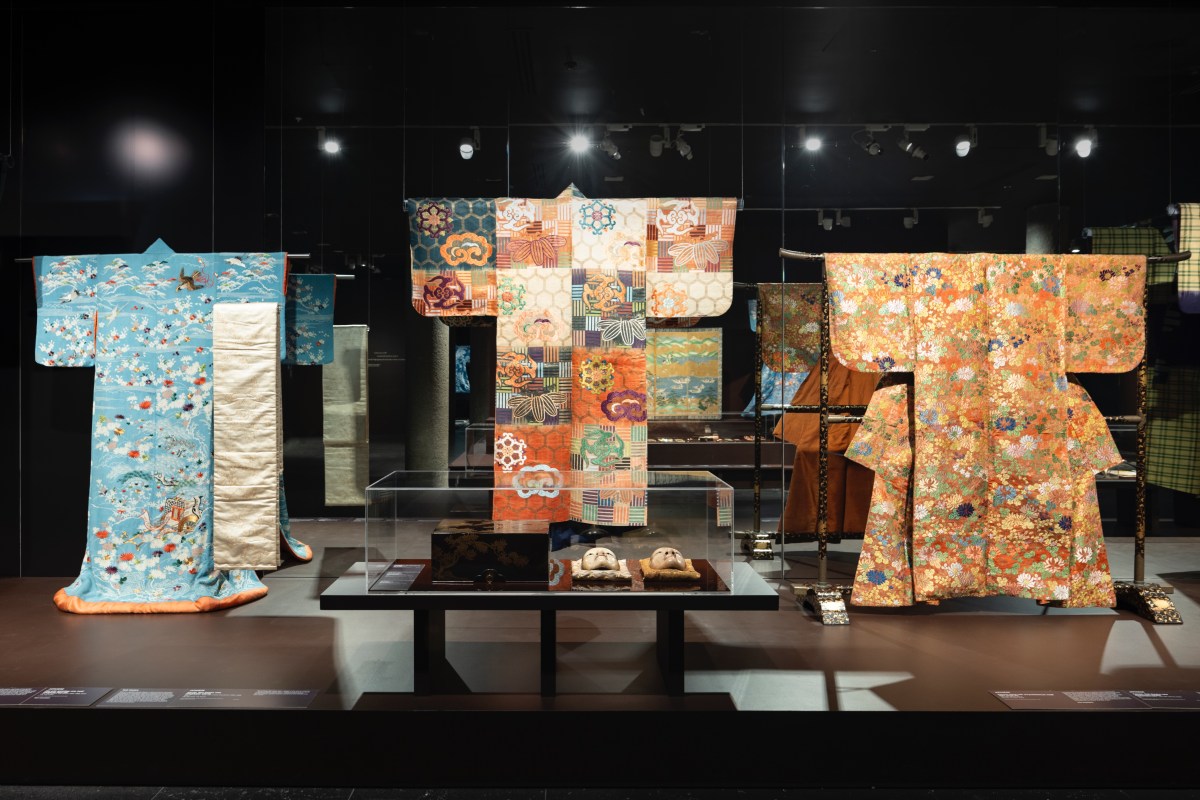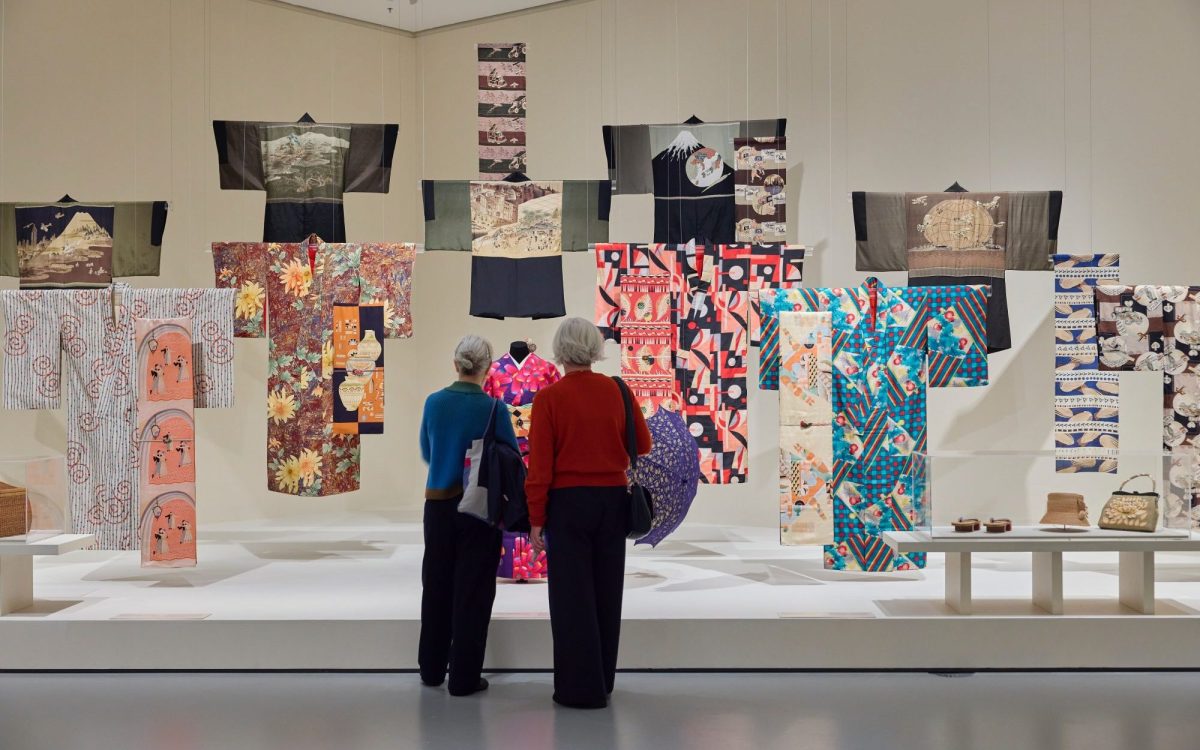Even centuries later, the allure of dazzling gold-threaded kimonos persists. What used to be reserved for nobles and royalties is now a part of street culture and contemporary fashion – with the T-shaped garment and layering technique as its building blocks, and leaving the rest to all kinds of creativity and remakes.
The exhibition, Kimono, at the National Gallery of Victoria (NGV) tracks the history of the garment in a chronological manner, revealing insights while visitors marvel at the breadth of patterns, fabrics and motifs on view, travelling from the East to the West and into globalisation.
The NGV’s kimono collection has been largely built and expanded in the past decade thanks to Senior Curator of Asian Art, Wayne Crothers. With this exhibition Crothers and Curatorial Project Officer, Charlotte Botica, trace key moments throughout this unique fashion history.
See falcons dash across a bright blue sky in a late Edo period kimono that was likely made for a high-class samurai woman, and the striking colours of autumn flowers in a Noh theatre robe made for the stage. Tigers adorn a late 19th century kimono made for Tango no sekku (Boys’ Day), while puppies are frolicking leisurely on a c 1925 – 1935 garment that speaks to the early development of Japan’s kawaii culture.

Included in the first gallery are variations of kimonos worn by everyday people, some which show how the garment has been modified for different professions, such as the Edo period fireman’s coat made with deerskin leather.
People’s interests have clearly shifted in the 20th century, and this too is reflected through kimonos. A baseball-shaped formation of enthusiastic players adorns a garment dated c 1930, while toy cars, planes and couples dancing are also popular.
Particular features of the traditional kimono have inspired Western fashion designers from the 20th century to modern day too, with Alexandra McQueen, Givenchy and John Galliano among those who put their own spin on the pieces. Some exaggerated the sleeves or necklines, while others abandoned the obi – traditionally tied around the mid-section – for a more relaxed look, which has become synonymous with the bohemian style.
Compared to the big name Western designers, kimonos by contemporary Japanese designers have been slightly pushed to the sidelines (and, interestingly, most of their mannequins lack a head) and, yet, the quality and innovation of those on display are outstanding. Issey Miyake and Ikko Tanaka showcase mastery of the pleated material while channelling a chic modern aesthetic, and nearby a skull-packed men’s kimono by Ueoka Taro (Robe Japonica) exemplifies both style and attitude.
Kimono’s poster child, Japanese kimono designer Hiroko Takahashi, can be seen in the final gallery. A mannequin made one-to-one in Takahashi’s likeness stands with a powerful judo pose, wearing a garment from her Reflective emptiness series. Characterised by black and white geometric patterns, these pieces channel the new energy of contemporary kimonos that can go from runway to streetwear.
Read: Exhibition review: French Impressionism from the Museum of Fine Arts, Boston, NGV International
The NGV is in comfortable territory with this exhibition, utilising its own collection and curating it around a crowd-drawing theme, like Cats & Dogs. But what used to be a fun, alternative access point into the collection for gallery-goers seems to have now become another ticket push, with all four of the NGV’s temporary exhibitions across the two galleries (NGV International and The Ian Potter Centre: NGV Australia) being paid shows – a single adult needs to cough up $109 to see all four. While discounted bundles exist, seeing Kimono after French Impressionism would send most into art overdrive, or encourage mindless viewing.
This reviewer isn’t against ticketed entry per se, but it does come into consideration when considering visiting the exhibition. Kimono doesn’t quite reach the expectations of a paid fashion display, like that of Africa Fashion with its bold exhibition design, or even the Martin Grant survey exhibition, currently at NGV Australia.
Removing the financial barrier to access would no doubt encourage more to experience the wide-ranging display that Kimono has to offer.
Kimono is on view at NGV International until 5 October; ticketed.





